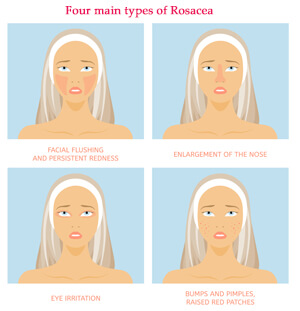Rosacea’s impact is more than skin deep
Dermatology
CentraCare Clinic - Health Plaza Dermatology
Rosacea is a skin disease that runs in the families those who are often of northern European descent with fair-skin. As a result, it can be quite common in Minnesota.
Here are a couple of important things to know about rosacea.
There are several different types of rosacea. But the most common types involve the following symptoms:
- The face easily blushes or becomes red
- Very sensitive skin that may burn and sting
- Frequent acne-like breakouts
- Prominent facial blood vessels (like “spider veins”)
Rosacea is a long-lasting illness. In some patients, the symptoms above can spread from the front of the face to one’s ears, cheeks and chin.
Rosacea is different from acne. Both conditions involve pimples and breakouts, but rosacea is a chronic condition that may be linked to how your immune system functions. Children can get rosacea, but unlike acne — it is more common in those between the ages of 30 and 50.
Rosacea can be a source of great frustration and worry. If people do not like their appearance, they may avoid going out in public and have lower self-esteem. It can cause problems in work and in relationships. And those with rosacea also may worry about their condition getting worse and scarring.
Rosacea cannot be cured, but it can be treated. There are a variety of treatment options available for the condition. These can include antibiotics (in lotions and pill form), anti-inflammatories and laser treatments.
If you or someone you love has rosacea, encourage them to see their health care provider or dermatologist. Depending on the symptoms and types of rosacea, he or she can identify treatments that may help. Your health care provider can also help find out what triggers one’s condition. And rosacea treatment can be effective in keeping the condition from getting worse and limiting the impact of flare-ups.
Although not typically covered by insurance, laser treatments for rosacea are aimed at getting rid of the prominent red blood vessels seen close to the top of the skin. At CentraCare Dermatology, we keep this treatment affordable as it is a great option for improving skin tone and texture and reducing redness. Patients notice a significant improvement in their skin in as little as two to three treatments.
